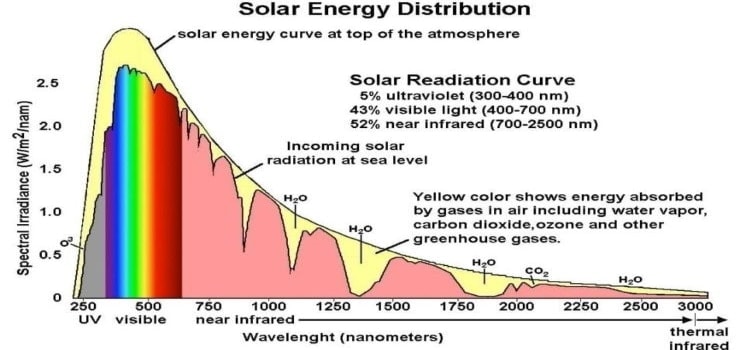Infrared Waves Solar Panels

Now capasso and his research team are proposing something akin to a photovoltaic solar panel but instead of capturing incoming visible light the device would generate electric power by releasing infrared light.
Infrared waves solar panels. Solar panels absorb the sun s heat and generate energy. But it s not really that simple and capturing energy from emitting infrared light is even less intuitive says lead author steven j. Lanthanide photon upconversion nanoparticles ucnps generally exhibit a nonlinear response to excitation light featuring a higher quantum efficiency at a higher excitation intensity. Specifically this layered cell is much better at collecting those longer wavelengths of light into the.
It is therefore generally invisible to the human eye although ir at wavelengths up to 1050 nanometers nm s from specially pulsed lasers can be seen by humans under certain conditions. This heat is emitted from earth in the form of infrared radiation. Invisible infrared light accounts for half of all solar radiation on the earth s surface yet ordinary solar energy systems have limited ability in converting it to power. The secret is using thermal radiation cells instead of photovoltaic solar cells.
Furthermore there is no standard method to report these values and most window film product manufacturers unlike vkool report ir rejection for their products at a single wavelength or narrow band. From the annals of symbolism inverse reports that scientists are working on backward solar panels that generate. Earth scientists study infrared as the thermal emission or heat from our planet. Byrnes ab 07 a postdoctoral fellow at seas.
You re just collecting the energy. Now scientists at the university of california riverside have created hybrid materials that can make use of solar infrared rays. Most of the solar energy falling on earth has wavelengths of wavelengths of 250nm to 2500nm. The infrared portion of solar energy is only one part of the total energy transmitted to earth within the solar spectrum and it does not take into account the significant effects of absorption.
Sunlight has energy so photovoltaics make sense. As incident solar radiation hits earth some of this energy is absorbed by the atmosphere and the surface thereby warming the planet. Generally speaking solar cells are capable of harnessing visible light for energy generation while other parts of the electromagnetic spectrum go by unnoticed including infrared. However solar infrared rays normally passes right through the photovoltaic materials that make up today s solar cells.















































